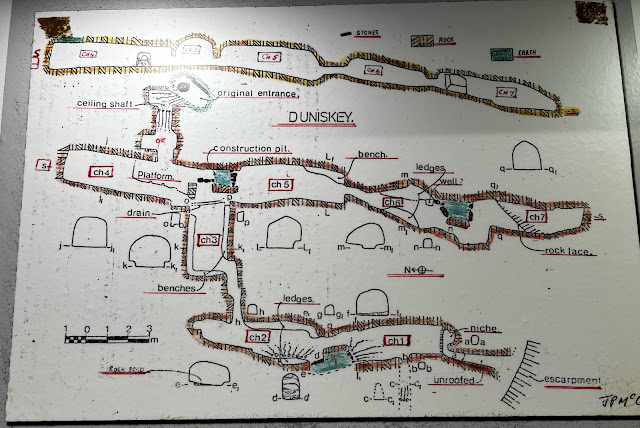The Beamish tower
On a hilltop in the Delacour villa estate on what was once the site of a church and graveyard, is a stone tower built by Charles Beamish around 1857. It is not certain whether it was built as a mausoleum or a folly however it is believed that Charles was buried there before being exhumed and reburied in the St Andrews, Kilmurry graveyard where his son Charley is. I have been unable to find any record of his burial place.
Charles was a chief instigator and driving force behind the building of the Cork to Macaroon railway first proposed in 1852. It is thought that left over materials, some of which were taken from the Beamish's quarry, may have been used in building the tower. It would also have been an opportunity to provide work after the famine. Charles was seen as a good landlord who also initiated roadworks (the Beamish Line) and bridge building which created work.
 |
| The interior of the tower showing remains of floor supports |
 |
| What could this cross built into the stonework mean? |
A fascinating twist was the accidental discovery in 1927 of a network of skilfully engineered underground tunnels in the area of the tower by a boy hunting rabbits with a ferret. He followed the ferret into a small hole and found himself in an underground tunnel. An opening had to be chiselled out to get the boy out. Explosives were used to create a larger opening and at least 7 chambers were discovered. Some are connected by creep holes. In chamber 6 there is room for at least 5 people to sit on a bench and more people could be accommodated in other areas. There is a barrel vault ceiling. There's a square well and drainage tunnels. Archaeologists have said it is similar to souterrains built in south west France but have been unable to date it. When it was excavated relatively modern tools were found inside. Could it have been built by the Delacours who were originally from France?
Did Charles Beamish know the souterrain was there? It's hard to imagine as an engineer he could build a tower on the site and not know what was underneath it. Did he have any involvement in its construction or extension or was it built many centuries earlier possibly by the Normans? Fascinating!






Comments
Post a Comment